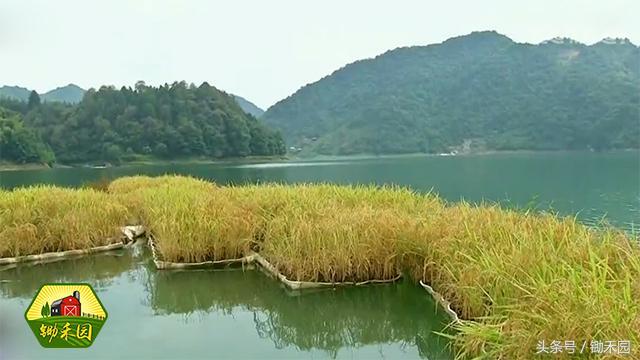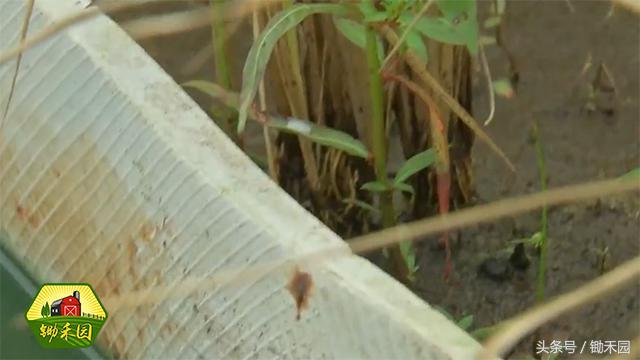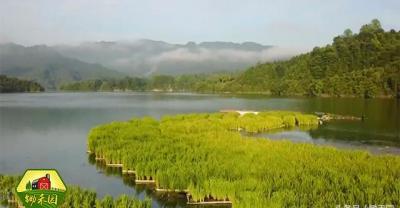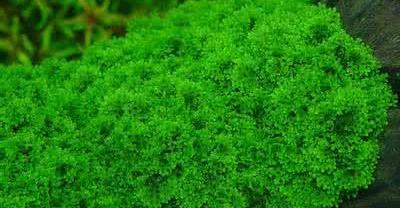Magical rice! No watering, no fertilization, no pesticides for life, only a bumper harvest when sowing is finished.
In Yanwutan Reservoir, Yuanling County, Hunan Province, there is a rare kind of rice, which is rare because it grows on the surface of the water. On the hilltop near the reservoir, there is an equally rare kind of rice, which grows on the top of the mountain without watering conditions. Is this a show?
Apparently not. The rice here, no matter on the water surface or on the top of the mountain, is not watered, fertilized or sprayed with pesticides. This is simply the masterpiece of a rice master. The people who grow it are called scouts.

Water rice, when ripe, does not lose to rice grown on land. It tastes good and has something to do with growing it in water.

Because of the large water area and low water temperature in the lake area, the growth cycle of rice is at least 2 weeks longer than that of terrestrial rice. Moreover, there is good light, strong ventilation, few insect pests and full grains, so there is a lot of nutrition in rice, with a yield of more than 1000 jin per mu, while the yield per mu has little to do with varieties.

Floating beds are essential to get rice out of the soil and into the waters of the lake to produce.

We all know that growing vegetables on water is generally made of plastic, but ordinary plastic is not resistant to low temperature and will become brittle when frozen. Finding a floating bed that does not produce pollution and is durable is the basis for the cultivation of aquatic rice.

The scout chose the EVA material to make the floating bed, which can reach the food grade. The floating bed is still soft at-20 ℃, and it is cold-resistant and heat-resistant and can be used for more than 30 years.

With a powerful floating bed, aquatic rice has a place to take root on the ground. But if you want rice to grow, you can't just drink water, and you have to fertilize it.
Secondary pollution occurs after ordinary fertilizers are dissolved in water, so the scouts choose the fertilizer matrix as the initial fertilizer.
The nutrient supply in the middle of the cultivation medium makes the rice seeds quickly have well-developed roots, and then the subsequent supply of nutrients on the water surface alone is sufficient for the growth of aquatic rice.
The root system of aquatic rice can not be blown down by the wind, and it can continuously absorb nutrients in the water. When the rice is ripe, the straw is still green.
So how did you achieve the original substrate for growing upland rice?
Microorganisms play an important role in the substrate species of aquatic rice, and it is almost all due to the increase of rice yield and quality. This microbe is granular and has white hyphae on closer inspection. All taken from the local mountains of Hunan, where there are many kinds of effective living bacteria, strong energy, and have long adapted to the local climate.
The rapeseed cake after the lees was squeezed dry, the mushroom residue after growing mushrooms, the bacterial stick and the original soil were mixed, and then the biochar fired from straw was added to ferment together. According to the seasonal temperature, the ideal cultivation substrate can be obtained after 3-7 days.
Spread this fertilizer on the floating bed and sow seeds, and no more fertilizer will be applied throughout the growth process. All that needs to be done during rice growth is to connect rows of aquatic rice into slices, and nothing else is needed.
If you grow rice on water, you have to harvest rice on water. So the scout converted the harvester into a harvester to improve the harvesting efficiency.
In addition to growing rice on the surface of the water, scouts can also grow rice on hilltops and slopes where there is no water. This kind of rice is not upland rice, but a thousand-year-old rice that has long existed.
This kind of ancient rice has good quality and strong adaptability. Can grow in any harsh environment. Resistance to barren, need of chemical fertilizers, good disease resistance, and no need for pesticides.
But locals do not like to grow it, because its disadvantages are also obvious. The yield is low, now it is common for hybrid rice to produce more than one ton per mu, but it is only two to three hundred jin. In addition, the germination rate is at the bottom, it takes root slowly, and it all depends on luck to plant good seeds and bad seeds.
After research, the Scout found that as long as the seeds of ancient rice are handled properly, they can have a bumper harvest year after year. As a result, the mode of budding before planting was creatively invented.
The first thing is to absorb water, sprout, and then dry the ancient rice. Then the sun-dried seeds were slightly frozen. The germination rate of the treated seeds such as soil is high, and the growth rate is 5-10 times higher than that of the untreated seeds. After maturity, there are about 200 grains in each ear, while there are only about 120 grains in the untreated ear. The yield per mu can reach more than 1000 jin from more than 500 jin before.
- Prev

Arena of Valor: who are the last heroes to repent of buying? Once you get into the pesticide, it's as deep as the sea!
As soon as I entered the pesticide like the sea, it was really good to be tricked by Timi's gimmicks to save gold coins all day to buy heroes, one after another. But the truth is very skinny.
- Next

Cultivation techniques of cauliflower vegetables
Cauliflower category includes: broccoli, day lily, rape flower cultivation. Rape flower field management: 1. Clean up and remove frozen buds and moss, and timely apply nitrogen fertilizer to seedlings...
Related
- Fuxing push coffee new agricultural production and marketing class: lack of small-scale processing plants
- Jujube rice field leisure farm deep ploughing Yilan for five years to create a space for organic food and play
- Nongyu Farm-A trial of organic papaya for brave women with advanced technology
- Four points for attention in the prevention and control of diseases and insect pests of edible fungi
- How to add nutrient solution to Edible Fungi
- Is there any good way to control edible fungus mites?
- Open Inoculation Technology of Edible Fungi
- Is there any clever way to use fertilizer for edible fungus in winter?
- What agents are used to kill the pathogens of edible fungi in the mushroom shed?
- Rapid drying of Edible Fungi

